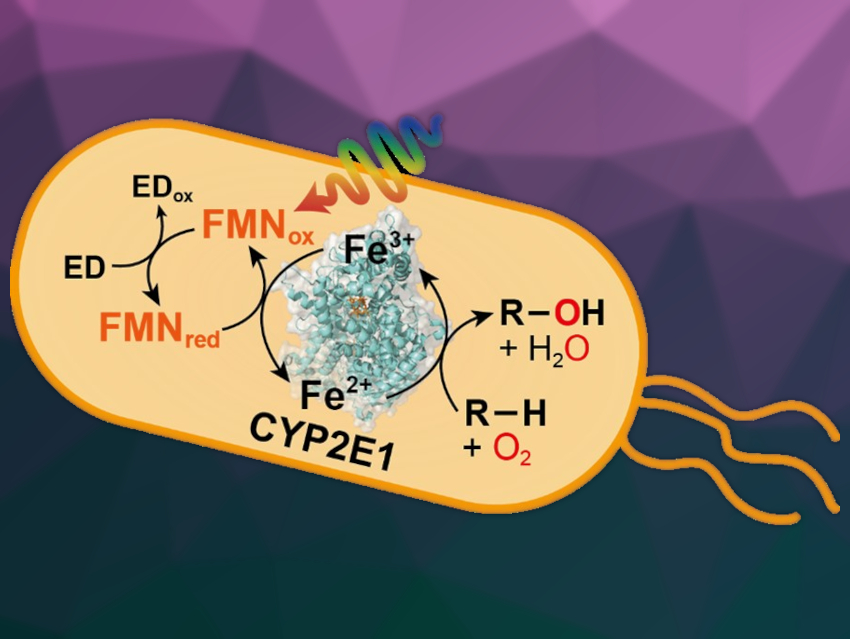Photobiocatalysis is a green platform for driving redox enzymatic reactions using solar energy. This approach avoids the need for high-cost cofactors or redox partners.
Chan Beum Park, Korea Advanced Institute of Science and Technology (KAIST), Daejeon, Republic of Korea, Chul-Ho Yun, Chonnam National University, Gwangju, Republic of Korea, and colleagues have developed a visible-light-driven whole-cell platform for human cytochrome P450 photobiocatalysis, using natural flavins as a photosensitizer. Cytochrome P450s are heme-containing enzymes that can catalyze the direct C–H functionalization of various compounds using molecular oxygen and electrons delivered by redox partners.
The team found that natural flavins, such as flavin mononucleotide (FMN), can mediate light-driven catalysis by human cytochrome P450 2E1 (CYP2E1) both in vitro and in whole-cell systems (pictured, ED = electron donor). The photoactivation of flavins is coupled with the direct transfer of photo-induced electrons to the CYP2E1 heme iron, which boosts photobiocatalytic hydroxylation reactions. Ethylenediaminetetraacetic acid (EDTA) or triethanolamine (TEOA) were used as sacrificial electron donors.
The researchers conducted FMN-sensitized P450 biocatalysis in whole cells expressing different human cytochrome P450s. They used this approach for the bioconversion of the drugs lovastatin and simvastatin and the steroid 17β-estradiol and obtained the hydroxylated products. This demonstrates the general applicability of the photobiocatalytic system. Thus, light-driven, flavin-sensitized P450 catalysis could be a cost-effective and environmentally friendly way to conduct green and sustainable chemical reactions.
- Solar‐Powered Whole‐Cell P450 Catalytic Platform for C‐Hydroxylation Reactions,
Chul-Ho Yun, Thien-Kim Le, Jinhyun Kim, Ngoc Anh Nguyen, Thi Huong Ha Nguyen, Eun-Gene Sun, Su-Min Yee, Hyung-Sik Kang, Soo-Jin Yeom, Chan Beum Park,
ChemSusChem 2021.
https://doi.org/10.1002/cssc.202100944



